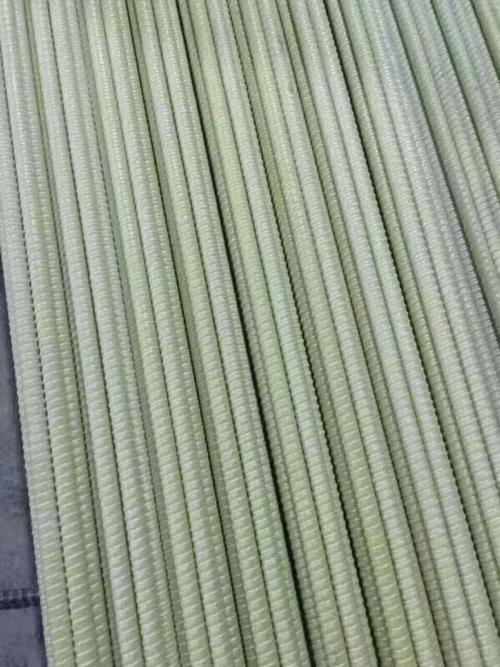- April 30, 2025
- Posted by: wellcoindustries
- Category: Rebar
Introduction
Choosing the right reinforcement material is crucial for the long-term success and durability of construction, agricultural, and soil conservation projects. Whether you’re building a greenhouse foundation, soil-retaining structure, or bridge deck, your rebar choice can significantly impact performance, maintenance costs, and safety.
Two popular corrosion-resistant options on the market today are glass fiber composite rebars (GFRP) and epoxy coated rebar. While both aim to address steel corrosion—especially in high-moisture or chemically aggressive environments—they differ in structure, cost, durability, and usability.
This article explores the pros and cons of glass fiber composite rebars vs epoxy coated rebar, equipping you with key facts and expert insights to make informed decisions tailored to your project needs.

Glass Fiber Composite Rebars (GFRP): Overview and Advantages
What Are Glass Fiber Composite Rebars?
GFRP rebars are made by combining high-strength glass fibers with a polymer resin matrix. This composite material forms a lightweight, non-metallic rod designed to replace traditional steel rebar in environments where corrosion is a concern.
These rebars are especially useful in applications like:
-
Agricultural infrastructure (greenhouses, irrigation tanks)
-
Coastal and marine construction
-
Roadways and bridges exposed to de-icing salts
-
Wastewater treatment and chemical plants
Key Benefits of GFRP
-
Superior Corrosion Resistance: GFRP is completely non-metallic, making it immune to rust and corrosion—even in salty or chemical-rich environments.
-
High Tensile Strength: Pound for pound, GFRP can match or exceed the tensile strength of steel.
-
Lightweight: GFRP rebars are about 75% lighter than steel, making them easier and safer to transport and install.
-
Electromagnetic Neutrality: Unlike steel, GFRP does not interfere with sensitive instrumentation, making it ideal for research facilities or power substations.
-
Reduced Life-Cycle Costs: Thanks to their durability, GFRP rebars can help reduce maintenance and replacement costs over time.
“We used GFRP in a retaining wall project near a saline lake and were impressed by how easy it was to cut and position on-site. Handling steel rebar in those conditions would’ve been a nightmare.” — Civil Contractor, Midwest USA
Epoxy Coated Rebar: Overview and Advantages
What Is Epoxy Coated Rebar?
Epoxy coated rebar starts with conventional carbon steel, which is then coated with a protective epoxy layer. This green-tinted coating helps shield the steel from moisture, chemicals, and salt, reducing the risk of corrosion.
Commonly used in:
-
Parking garages
-
Bridge decks
-
Water treatment plants
-
Medium-term public infrastructure projects
Benefits of Epoxy Coated Rebar
-
Structural Reliability: The steel core provides robust load-bearing capacity, suitable for heavily-loaded structural components.
-
Lower Upfront Cost: Generally more affordable than GFRP, making it attractive for budget-sensitive projects.
-
Industry Familiarity: Epoxy rebar is widely accepted and specified in many regional and federal construction codes.
However, the coating can be susceptible to damage from handling, which can expose the underlying steel to corrosion if not properly managed.
Head-to-Head Comparison: GFRP vs Epoxy Coated Rebar
Durability & Corrosion Resistance
In a Florida-based infrastructure test, bridges reinforced with GFRP showed zero corrosion after 20 years, while epoxy coated rebar displayed minor rusting in areas where the coating had chipped.
GFRP:
-
Non-corrosive
-
Resistant to acids, salts, and chlorine
-
Ideal for permanent structures in aggressive environments
Epoxy Coated Rebar:
-
Effective when coating is intact
-
Vulnerable to corrosion if coating is cracked or damaged
Cost and Lifecycle Value
-
Epoxy Rebar: Lower initial material cost. Ideal for projects with short-to-medium design life (15–30 years).
-
GFRP Rebar: Higher upfront cost, but lower long-term maintenance and repair needs. Long-term cost-effective for structures needing 50–100 years of durability.
“GFRP saved us money long-term. We don’t have to factor in future corrosion repair, which is huge for our 60-year design spec.” — Municipal Infrastructure Engineer
Installation & Handling
-
GFRP: Can be cut using simple tools like carbide blades. Lightweight and easy to position. Reduces labor fatigue.
-
Epoxy Rebar: Heavier, may require cranes or additional labor. Care must be taken to avoid damaging the coating during transport or installation.
Code Compliance and Adoption
-
GFRP: Recognized in ACI 440.1R and ASTM D7957. Gaining traction, especially in marine and corrosive environments.
-
Epoxy Rebar: Long-standing use with broad code inclusion. More contractors are trained and familiar with it.
Choosing the Right Rebar for Your Application
Agricultural and Water Conservation Projects
GFRP is often the better choice for:
-
Greenhouse foundations
-
Irrigation channels
-
Dams and spillways
-
Salt-affected soils
Its lightweight nature reduces transportation costs to rural areas and its non-corrosive properties ensure longevity in high-moisture conditions.
Large-Scale Civil Construction
Epoxy rebar may still be favored when:
-
Budget constraints exist
-
The project has a shorter design life
-
Local specifications mandate traditional materials
In these scenarios, the familiarity and availability of epoxy coated rebar make it a practical choice, especially if handling precautions are followed to prevent coating damage.
Conclusion
Both GFRP and epoxy coated rebar have their place in the construction and infrastructure world. Here’s a quick recap:
-
GFRP excels in durability, corrosion resistance, and weight—making it ideal for long-term, moisture-exposed projects.
-
Epoxy coated rebar offers initial cost savings and code familiarity, but requires careful handling to prevent premature corrosion.
Ultimately, your project’s environment, design life, and handling logistics will determine the best fit.
Need help choosing the right rebar solution for your project? Contact our team for tailored advice or request a custom quote today.
